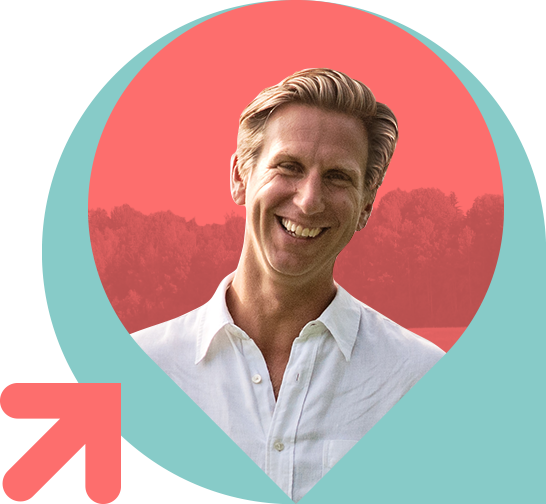Victim or Architect?
We all run stories in our heads. Stories about who we are, where we come from, what others think of us, why we do what we do. These stories, often called Schema in psychology, are beliefs that we hold about ourselves. It turns out they are incredibly powerful. Formed during our childhood we tend to look for data through our lives that reinforce these stories. This is one of the reasons two people seeing the same thing can experience it in completely different ways.
Imagine you are giving a lecture, you are a bit nervous as it is the first time you have talked to such a large audience. 5 minutes in the person in the front row barely manages to stifle an enormous yawn. What is your reaction?
A) I must be really boring
B) They have been up all night partying
C) Stutter to a halt and leave the stage
D) Poor them, maybe they have been up all night with a newborn and are trying to study at the same time to further their prospects
Those of us (me included) who carry around the story “I am not good enough” immediately assume the answer is A). Depending on how strongly this has been imprinted during childhood and how we have tackled this since, we may even follow through with C). However those whose story is “I can do this” or “I am good at what I do” will tend to jump to B) or D). The difference is a belief about causation, rather than I caused the yawn, there may be a series of outside factors beyond my control that caused the yawn.
Our early experiences and our stories can push us towards a passive acceptance of life or a proactive attempt to create the life you want. Consider for a moment the nuance between “life is tough” and “life is challenging” (assuming that we do not often hear people say, “life is easy”). “Life is tough” implies an abdication, a being done to. This is what Psychologist Martin Seligman described as Learned Helplessness. Whatever I do it does not work, so why bother? Life is just unfair. The elite just get richer and there is nothing I can do about it, that makes me angry and bitter. This is the Victim pattern, I am done to, I have been dealt a bad hand.
“Life is challenging” is a more realistic assessment. Challenges can be overcome, can be worked with. Pleasure and happiness are derived from tackling challenges, often more than from times of plain-sailing. Fundamentally we have a choice, be a victim of our past, or an architect of our future? Architects make changes, they make things happen. Entrepreneurs by definition are architects, although they have often been through a victim phase having had hardships in their earlier lives. They have somehow turned this around into a sense of can do rather than done to. This shift happens when negative stories are modified and positive stories amplified.
So how do we work with our stories? Can we change them? The news from Seligman is positive. Instead of Learned Helplessness, we can learn and practice Learned Optimism. Not only does this lead to a reduction in depression, and more joy in life, it also helps us run through the brick walls and make things happen.
Here are two different ideas to experiment with. First how do we know when a negative story is running? Well we become emotionally activated. In extreme circumstances we will sweat, have a higher heart rate or even faint. More likely we just feel a little agitated or threatened, there is that feeling in the pit of our stomach as our adrenaline is released. Next time you feel like this try and identify the story that is running. Take the lecture as an example. The story that kicks in for me is “I am boring and no one is interested in what I say, it is always been so, who am I to even be on this stage?” Now try running a different story; “There are 99 other people here who are not yawning, I know that there are times when people have been interested in what I say, I am just going to go for it”.
What impact do the two different stories have on the rest of the lecture? Significant, if I allow the first story to run, I will be more nervous and will be less convincing and interesting. Nervousness is not a helpful communication tool. The story makes things worse (this is why they become so powerful and entrenched, they are self reinforcing). The second story grows my confidence and helps me deliver a better lecture, and chips away at the old story.
In a quieter non activated moment try the Court of Law exercise that I often use with clients. Lets use the lecture again as an example. Imagine that you were in a court in front of a judge presenting or prosecuting the story “I am boring and no one wants to listen to me”. What facts would you present to the judge? One person yawned, once, Now try to defend the case. The other facts would be along the lines of; no one else yawned, you were asked to speak because you had relevant knowledge, you cannot interest everyone in the audience. The judge would throw the case out, the prosecution would not succeed.*
Shifting stories is not easy, these are deeply held entrenched beliefs. However it is possible and taking responsibility for your stories is the starting point. If you are struggling to spot or change your stories then a therapist can be incredibly helpful, in particular a relatively new form of psychology called Schema Therapy.
The Italian war correspondent, Tiziano Terzani wrote in a book for his son called The end is my beginning;
“Very few people understand that what is important is not what happens but how we interpret it. The world is whatever we construct of it and we are always capable of changing our constructions”
*Sometimes the prosecution wins. For example lets say lots of people were yawning or walking out of the lecture. The answer is not to blindly convince yourself that you are still great and interesting, but to make an honest appraisal. Did I under prepare? Do I know enough about the topic, did I get the audience wrong, am I better in smaller more intimate discussions rather than lectures?
More Articles
Organisational health - the heartbeat of a business
Organisational health- the heartbeat of a business When we talk about business success, we often look first at strategy; the clever plan, the…
Rituals
Rituals surround us at work, in society and at home. They help manage emotions- think about what happens when someone dies…
How to take the right risks
Individuals and organisations can both benefit from a more entrepreneurial approach. Starting a new business, solving difficult problems…


